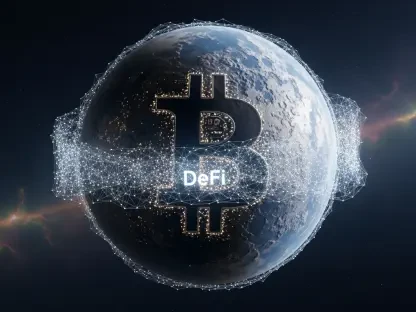In recent years, the cryptocurrency landscape in Europe has been significantly influenced by regulatory frameworks, notably the Markets in Crypto Assets Regulation (MiCA). Policymakers endeavor to establish an environment that fosters innovation while ensuring investor protection and market stability, making MiCA’s impact both current and critical. The legislation aims to enable growth in the digital asset domain while addressing potential risks, sparking intense debate among stakeholders. This article delves deeper into MiCA’s pervasive effects on the European market, examining its regulatory reach and implications for innovation within the industry. By assessing both opportunities and challenges, this narrative offers insights into the evolving crypto ecosystem under MiCA’s jurisdiction.
Regulation’s Imperative Role in Crypto Markets
Investor Protection and Market Legitimacy
MiCA was introduced with a primary emphasis on protecting investors and establishing clarity within the often-turbulent cryptocurrency markets. Enhanced regulatory measures aim to safeguard investors from fraudulent activities, creating a framework that boosts trust in the digital assets sector. By enacting rigorous compliance, transparency, and security protocols, MiCA endeavors to create an ecosystem where investors can engage confidently. This sense of legitimacy is crucial for widespread adoption and entrenching cryptocurrencies as viable financial instruments within the traditional market fabric.
However, the pursuit of regulatory clarity presents dual-faced prospects. While fostering a safer investment climate could lead to increased participation, it also imposes considerable compliance demands on market players. For smaller startups, these demands might create significant financial and operational pressures, potentially stifling innovation and inhibiting market entry. Thus, the efficacy of MiCA’s protective measures is under scrutiny, focusing on maintaining a balance that doesn’t deter innovative projects from flourishing under regulatory obligations.
Market Stability and Standardization
The ambition for market stability plays a pivotal role in MiCA’s design, aiming to offer a uniform set of standards across the European Union. This harmonization seeks to mitigate risks and reduce fragmentation within the crypto sector, offering a streamlined regulatory architecture conducive to cross-border operations. Such a unified approach could provide a definitive edge to the European market in establishing a potent and competitive position globally. By doing so, MiCA sets a precedent that may influence regulatory practices in other jurisdictions, pushing global standards towards comprehensive digital financial asset regulation.
Nevertheless, this quest for standardization raises concerns about potential overreach and its subsequent impact on market dynamics. MiCA’s rigorous scrutiny might inadvertently lead to a concentration of market power, disadvantaging smaller entities unable to sustain cost-intensive compliance methodologies. This could enable larger firms to dominate, reducing competition and possibly stifling the diverse creativity smaller innovators bring to the scene. As MiCA unrolls its framework across various cryptocurrency market facets, its pervasive regulations’ effect on market equilibrium remains a significant area for assessment and adjustment.
Innovation: The Driving Force of the Industry
Complexity and Costs for Startups
MiCA’s introduction prompts discussions regarding its impact on innovation, particularly concerning compliance costs and complexity for startups. A formidable regulatory landscape translates into heightened expenses related to legal and operational provisions, posing an obstacle particularly daunting for small businesses. Subscription to regulatory adherence requires substantial investments, not merely in monetary terms but also in strategic alignment and resource allocation, presenting a critical choice for emerging companies seeking sustenance and growth within the market.
As startups grapple with these challenges, there’s an increasing possibility they may seek jurisdictions with more lenient regulatory frameworks, initiating regulatory arbitrage cycles. This migration potential underscores the need for European regulators to adapt flexible approaches encouraging local innovation without compromising investor protection. Striking the right balance — fostering a vibrant incubator for new ideas rather than driving them away — will be essential to ensure regulations are enablers rather than hindrances to the entrepreneurship fueling technological advancement.
Encouraging Innovation-Friendly Policies
MiCA underscores the need for policies that impose restrictions but also nurture innovation. Digital assets’ evolving nature means regulatory policies must keep pace with technological advancements, adapting to new challenges while supporting emerging technologies. Creating a regulatory climate that rewards innovation by offering incentives or clear guidelines can empower startups and established firms alike. Proactive measures could include reducing unnecessary regulatory barriers and offering compliance guidance to support businesses lacking resources for self-navigation through the regulatory landscape.
Efforts must focus on crafting a regulatory environment perceiving innovation as an opportunity rather than a field needing containment. Emphasis should be on collaborative regulatory approaches involving innovators, investors, and regulators working together to align technology advancement with secure, regulated market participation. Through engagement and dialogue, MiCA could pave the way for innovation-friendly policies recognizing the crypto realm’s dynamic nature, ensuring Europe remains at the forefront of global cryptocurrency development.
Global Implications and Market Reach
Expansion Beyond EU Borders
MiCA’s regulatory influence extends beyond Europe, impacting global operators aiming to penetrate the European market. Non-EU entities aspiring to engage with European clients find themselves subject to MiCA’s requirements, prompting a reassessment of international strategic plans. This profoundly impacts global cryptocurrency operations, challenging companies to navigate compatibility with extended regulatory frameworks alongside existing domestic obligations. Essentially, MiCA’s imposition sets a precedent that may alter the global regulatory landscape, encouraging non-EU regions to emulate or adapt similar frameworks.
MiCA’s influence introduces a complex interplay between regulation and business strategy, as operators weigh accessing the European market’s benefits against compliance costs. Companies must ensure their operations remain within differing laws’ bounds, potentially spurring collaborations or novel compliance solutions to maintain market presence. MiCA’s provisions offer Europe a unique opportunity to influence cryptocurrency regulation internationally, shaping a standardized global approach to digital asset governance.
Defining Global Standards
MiCA’s broader implications in setting global standards could provide architecture for a coherent global cryptocurrency framework. As digital assets continue blurring traditional financial boundaries, a cohesive regulatory approach could enhance stability and offer a predictable landscape for worldwide innovation and investment. As a frontrunner in regulatory provisions, MiCA has the potential to serve as a model for establishing universally recognized standards, facilitating transnational cooperation and broader adoption in varied jurisdictions.
Persistent challenges arise in achieving global consensus, as different regions have varied economic interests and regulatory philosophies, complicating alignment of international standards. Finding common ground requires dialogue and flexibility, recognizing distinct priorities and risks each jurisdiction faces. Successful harmonization under MiCA’s framework could lead to an enhanced, globally coherent cryptocurrency market, thereby reducing discord and fostering beneficial interactions among international market participants and regulatory bodies.
Future Trends and Adaptation Needs
Evolution of DeFi Under Regulatory Ambiguity
Decentralized finance (DeFi) poses a unique challenge and opportunity within MiCA’s framework, largely due to the current absence of clear regulatory guidance specific to this sector. Though MiCA doesn’t directly address DeFi, there’s an anticipated evolution where adjustments may integrate specific DeFi considerations, offering clarity in an often opaque area. This regulatory vagueness has repercussions, influencing the trajectory and strategic decisions for DeFi projects seeking to operate within or export services to European markets.
Innovation and flexibility typical of DeFi platforms necessitate dynamic, adaptable regulatory strategies preventing stifling this rapidly growing sector. The absence of regulation might prompt DeFi projects to seek regions with favorable regulations, yet this opens an avenue for the EU to lead by crafting forward-thinking policies capturing innovation essence while safeguarding market integrity. This delicate balance will be crucial for regulators aiming to capitalize on DeFi’s potential while addressing inherent risks these platforms pose.
Addressing Financial Risks in Digital Assets
Financial risks are intrinsic to digital assets, requiring vigilant regulatory oversight to maintain market confidence. MiCA’s protective measures enhance transparency and impose rigorous standards; however, they cannot eliminate market risks such as volatility and systemic failures. Investors must remain aware of these risks while acknowledging the protected landscape MiCA strives to present. Despite secured regulatory structures, participants need prudent risk assessment practices, particularly in areas like smart contracts and non-custodial solutions outside immediate regulatory purview.
Regulators could facilitate education and awareness initiatives, empowering investors to make informed decisions and navigate potential hazards. Continuous dialogue and collaboration within the industry are essential to adapt to advancements and tackle emerging risks effectively. Building on MiCA’s foundation and integrating global best practices could foster confidence and promote long-term growth in the digital asset space. Achieving this balance between risk mitigation and opportunity realization will define the future trajectory of cryptocurrency markets under MiCA’s influence.
Navigating the Future with MiCA
MiCA’s introduction centers on safeguarding investors and clarifying chaotic cryptocurrency markets. Its regulatory framework aims to protect investors from fraud and create a trust environment in digital assets. By enforcing strict compliance, transparency, and security protocols, MiCA seeks to establish a landscape where investors feel secure. This legitimacy is essential for encouraging widespread adoption and integrating cryptocurrencies into mainstream financial systems.
Achieving this clarity involves both opportunities and challenges. While a safer investment environment may attract more participants, it imposes significant compliance burdens on market players. For startups, these requirements can translate into substantial financial and operational challenges, which might hinder innovation and obstruct market entry. Therefore, MiCA’s protective measures are under scrutiny as they must strike a balance ensuring regulatory demands don’t stifle initiatives trying to grow in the dynamic digital asset arena.









